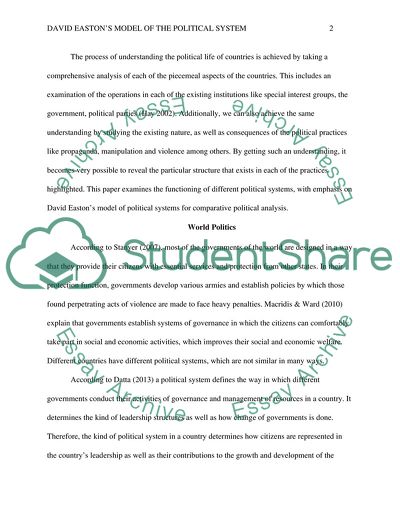Cite this document
(David Eastons Model of the Political System Essay Example | Topics and Well Written Essays - 1500 words, n.d.)
David Eastons Model of the Political System Essay Example | Topics and Well Written Essays - 1500 words. https://studentshare.org/politics/1877829-evaluate-the-usefulness-of-david-eastons-model-of-the-political-system-for-comparative-political-analysis-use-at-least-one-democratic-and-one-authoritarian-regime-as-examples
David Eastons Model of the Political System Essay Example | Topics and Well Written Essays - 1500 words. https://studentshare.org/politics/1877829-evaluate-the-usefulness-of-david-eastons-model-of-the-political-system-for-comparative-political-analysis-use-at-least-one-democratic-and-one-authoritarian-regime-as-examples
(David Eastons Model of the Political System Essay Example | Topics and Well Written Essays - 1500 Words)
David Eastons Model of the Political System Essay Example | Topics and Well Written Essays - 1500 Words. https://studentshare.org/politics/1877829-evaluate-the-usefulness-of-david-eastons-model-of-the-political-system-for-comparative-political-analysis-use-at-least-one-democratic-and-one-authoritarian-regime-as-examples.
David Eastons Model of the Political System Essay Example | Topics and Well Written Essays - 1500 Words. https://studentshare.org/politics/1877829-evaluate-the-usefulness-of-david-eastons-model-of-the-political-system-for-comparative-political-analysis-use-at-least-one-democratic-and-one-authoritarian-regime-as-examples.
“David Eastons Model of the Political System Essay Example | Topics and Well Written Essays - 1500 Words”. https://studentshare.org/politics/1877829-evaluate-the-usefulness-of-david-eastons-model-of-the-political-system-for-comparative-political-analysis-use-at-least-one-democratic-and-one-authoritarian-regime-as-examples.


